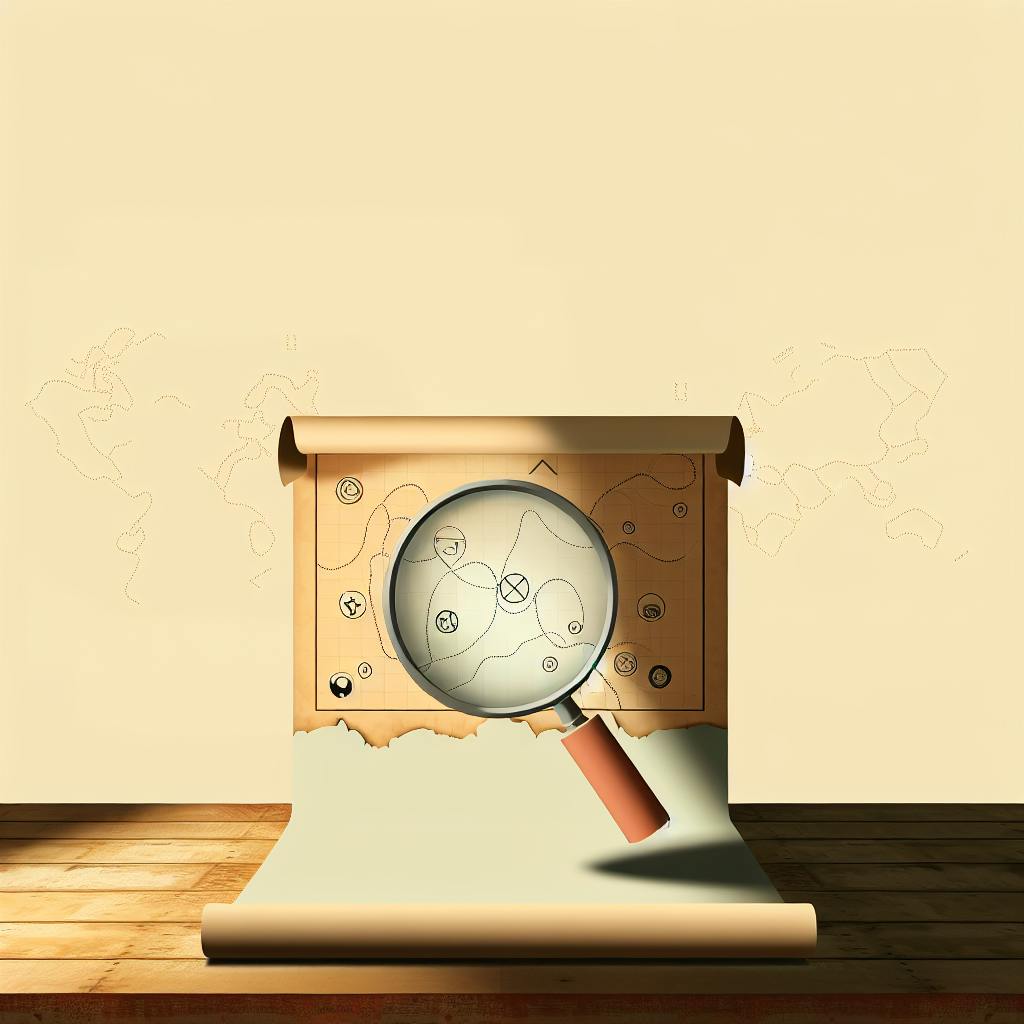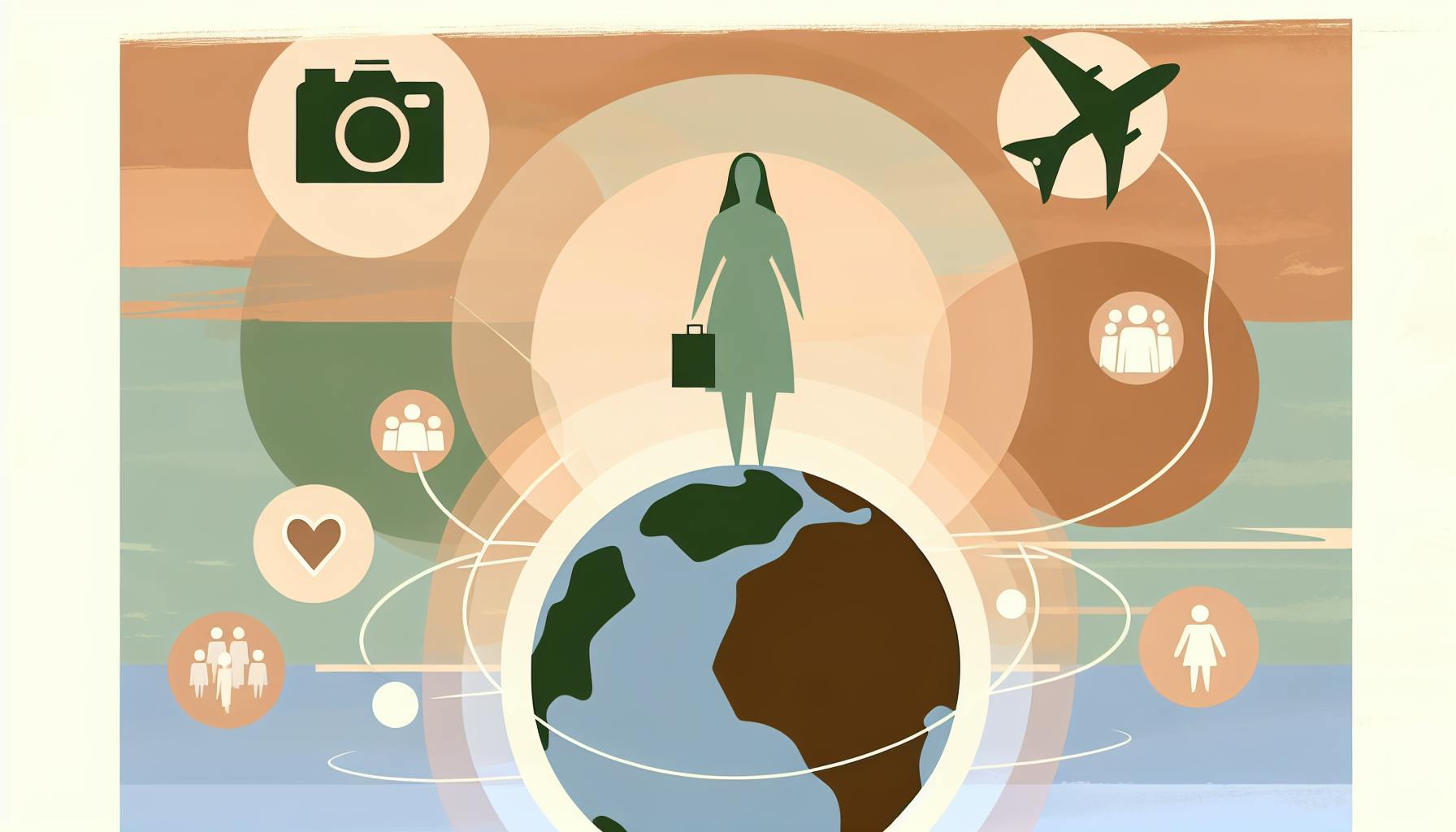The creator economy is on an explosive growth trajectory, expected to skyrocket from $250 billion in 2023 to an estimated $480 billion by 2027. This rapid expansion is fueled by several key factors:
- The widespread adoption of platforms like TikTok, YouTube, and Twitch, enabling creators to reach global audiences and monetize their content more effectively.
- Increasing investment from companies and brands in influencer marketing, recognizing the value of authentic creator-audience relationships.
- Technological advancements, including AI and analytics tools, that enhance content creation and audience engagement.
- The rise of short-form video content as a dominant medium for digital expression and communication.
This growth presents both opportunities and challenges for creators and businesses alike, from navigating platform dependencies and fluctuating incomes to leveraging new tools and platforms for monetization and audience growth. With North America currently leading the charge, the global landscape of the creator economy is diversifying rapidly, promising exciting developments for creators around the world.
Table 1: Projected Growth Rates
| Category | 2023 | 2027 | CAGR |
|---|---|---|---|
| Creator economy market size | $250 billion | $480 billion | 17% |
| Influencer marketing spend | $8 billion | $20 billion | 20% |
| Social media ad spend | $225 billion | $315 billion | 7% |
This table shows that both the creator economy and influencer marketing are expected to grow a lot in the next five years.
Compared to them, the money spent on social media ads will also increase but not as fast. This means there's a big chance for growth in the creator and influencer areas.
More people want real and genuine content now, especially younger folks. Almost 40% of people say they're watching more content than they did last year.
Creators are finding new ways to make money, like through subscriptions, selling digital art (NFTs), and getting direct support from fans. Because of this, more people are choosing to be full-time creators instead of doing traditional jobs.
With all these positive changes, the creator economy is likely to keep growing fast. Those who get involved early could see a lot of benefits.
The Role of Short-Form Video
Short videos on apps like TikTok have really helped the creator economy grow quickly. These apps let people make and share videos easily with just their phones. More and more people can join in because smartphones are everywhere now.
TikTok, for example, had over 1 billion people using it every month in 2022. It's really good at showing people videos they like, which means new creators can get noticed much faster.
Videos that are short get a lot of attention. On average, a TikTok video gets way more views and comments than videos on YouTube or Instagram. This means it's easier for these videos to spread far and wide.
"TikTok's way of showing my videos to people just works. I started getting thousands of views from day one. In just 6 months, I gained over 500,000 followers and now I can live off what I earn from working with brands." - Alicia, a person who makes lifestyle videos on TikTok
As people watch more short videos, these platforms are finding new ways for creators to make money. This could be through sharing ad money, getting tips, monthly subscriptions, or deals with brands.
Key Monetization Stats
- TikTok gives out more than $300 million every year to its creators
- The top people making videos on TikTok can get more than $200,000 for each video they make with a brand
- People streaming on Twitch made $3.8 billion in 2021 from fans through tips, subscriptions, and cheers
The chance to make money from making short videos is making more people think about doing this as a job. Over half of the people making videos on TikTok now spend more than 5 hours each week creating.
With the promise of making money and the chance to reach people all over the world, short videos will probably keep helping the creator economy grow. As more people in different places get smartphones, even more people will be able to join in.
Key Players Positioned to Benefit
As more and more people get into creating content online, some big websites and apps are in a great spot to make the most of this boom.
The big names that are doing great in these areas and are likely to grow because of the creator economy include:
YouTube
YouTube is the biggest place for videos with over 2 billion people visiting every month. Here's why it's great for creators:
- Lots of creators already make money here with different ways to earn.
- A smart system helps viewers find videos they like.
- Gives creators info on how their videos are doing so they can make better ones.
- Creators can make money through ads, memberships, and selling stuff.
TikTok
TikTok, with over 1 billion monthly visitors, is the go-to for short videos. Here's why it's great:
- Its system is really good at showing people videos they might like.
- Making and sharing videos is easy right from your phone.
- Early success in making money through ads.
- New features let creators sell products directly.
Twitch
Twitch is the top place for live streaming, offering a way to connect with viewers in real-time. Here's why it's great:
- Features like chat and tipping make it easy for creators and fans to interact.
- Programs for making money are already set up.
- Provides data to help schedule streams better.
- Creators can sell merchandise directly.
Spotify
Spotify leads in streaming music and podcasts. Here's why it's great:
- Huge reach with over 406 million monthly visitors.
- Offers special data to help creators know what works.
- Has different ways for creators to make money, including ads.
- Starting to offer tools for creators to make money and connect with fans.
With their strong setup in areas like reaching a lot of people, using data to help creators, and providing ways to make money, these platforms are ready to take advantage of the creator economy growing so fast. They're in a good position to get a bigger piece of the pie when it comes to influencer marketing budgets and payments to platforms.
Challenges and Opportunities
Content creators are facing a bunch of hurdles as they navigate the fast-growing creator economy. But, there are also new chances popping up that could help them deal with these challenges.
Challenges
Platform Dependence
- A lot of creators put all their eggs in one basket by relying on just a few platforms like YouTube, Instagram, and TikTok to reach their audience.
- This can backfire if the platform changes how things work, making it harder for people to see their content.
- Their income can go up and down a lot if it's all tied to how well these platforms perform.
Copyright and Monetization Restrictions
- Even though it's easier to get on these platforms, there are still rules about using other people's work and how you can make money.
- YouTube, for example, has a system that stops you from using copyrighted stuff without permission. But it's not always clear what's allowed and what's not.
- It's tough to find the right balance between following the rules and being creative as platforms slowly update their guidelines.
Income Fluctuations
- Creators can see big changes in how much money they make based on how much people like their work, changes in the platform, and other factors.
- Making a steady living from creating content is still a big challenge.
Opportunities
Emergence of Creator Tools
- There are now special tools that help creators manage how they grow their audience, make content, and earn money.
- These tools let creators spread their wings across different platforms and ways of making money.
- This gives creators more control and helps make things more steady.
Rise of Micro and Nano Influencers
- Smaller influencers with very specific audiences are getting more attention from brands because they can reach the right people more effectively.
- These smaller influencers often have better connections with their audience than bigger names.
- It's easier for new creators to build a following in a specific area and start working with brands.
Direct Fan Monetization
- On many platforms, creators can get money directly from their fans through things like chat, tipping, and subscriptions.
- This can help balance out the ups and downs in other ways they make money.
- It also means creators don't have to rely as much on brand deals and ads.
Even though there are tough challenges, the growing creator economy is also creating new ways for creators to get past these obstacles. As more creators join in and the industry grows, there's a bigger push to make things better and more stable for creators.
sbb-itb-bc761f5
The Role of Technology
Technology is playing a big part in helping the creator economy grow by giving creators new tools for making content, understanding their audience, and even creating digital influencers.
AI-Powered Content Creation
Artificial intelligence (AI) is making it easier to create content in several ways:
- Idea generation - Tools like Jasper help creators come up with new ideas for videos or posts.
- Writing help - Apps like Rytr offer suggestions for writing social media captions and blog posts.
- Editing made easy - Services like Descript can edit audio and video with AI, saving creators a lot of time.
- Creating images - Websites like Midjourney can make pictures, drawings, and more for creators to use.
AI is handling the boring tasks so creators can focus on more important stuff. A survey found that 90% of influencers use AI tools like ChatGPT to help with their content.
Analytics and Optimization
Knowing how your content is doing is key for creators who want to get better. New tools for analytics offer helpful insights:
- Who's watching - See who's watching to make content that fits them better.
- What works - Keep track of likes, comments, and shares to know what people like.
- Seeing the big picture - Look at your performance across different platforms like YouTube and Instagram.
- What to try next - Find out about trending topics and formats you could try.
With this information, creators can make their content better and reach more people. For instance, YouTube's analytics helped MrBeast figure out the best times to post videos.
The Rise of Virtual Influencers
A new thing happening is virtual influencers - these are made-up people that look real and can do things like models and singers. Some examples are:
- Lil Miquela - a virtual model and singer with lots of Instagram followers
- Knox Frost - a CGI artist on TikTok
- Zoe Dvir - a digital fashion influencer
Brands are starting to work with these virtual influencers because they can be tailored for different ads, don't have personal issues, and can post consistently.
Opportunities for Growth
All these new developments mean the creator economy can keep growing:
- Easier to start - With AI's help, anyone can start making content. This means we'll see more creators from different places.
- More content - By automating tasks, creators can make more stuff and have more chances to make money.
- New ways to earn - Things like branded digital characters offer fresh ways to make money.
- Reaching new people - New kinds of content can attract different kinds of viewers, which helps the creator economy grow even more.
As technology gets better, it's going to support human creativity, not replace it, making more opportunities for everyone in the creator economy.
Regional Differences
The creator economy is growing fast everywhere, but not all places are growing at the same speed or in the same way.
North America Leads the Pack
North America is a big player in the creator economy, expected to make up 40% of the market by 2036. Here's why it's doing so well:
- It was quick to use platforms like YouTube, Twitch, and OnlyFans.
- People have money to spend on things like digital content subscriptions and tips.
- There's a big culture of streaming on platforms like Twitch.
The United States is looking to have over 50 million people making content by 2025. Opportunities here include:
- Building tools and systems to help creators get paid and understand their audience.
- Services that help creators with money matters like taxes.
- Using new web technologies.
Rapid Expansion Across Europe
Europe's creator economy is also growing quickly. This is because:
- More people can afford to spend money on creative content.
- There's a strong culture that values arts and creativity.
- The area has good systems and laws to protect creators' work.
Countries like Germany, France, Spain, and Italy each have over 1 million professional creators. They're focusing on:
- Tools and platforms that work in many languages.
- Fields like fashion, design, and arts.
- Working with traditional media companies.
Asia Charges Ahead
Asia-Pacific is expected to grow the fastest, with the creator economy market size increasing five-fold by 2030. This is because:
- There are a lot of young people who are really good at using smartphones and apps.
- Apps like TikTok are very popular here.
- People really value and appreciate digital creators.
China has over 40 million content creators, and India might have over 50 million by 2025. The big chances here are:
- Making local platforms and systems for creators.
- More smartphone tools for creating content.
- Using virtual influencers for brand partnerships.
While North America might be the biggest market right now, places like Asia and Central/Eastern Europe are quickly becoming important spots for the creator economy.
Conclusion
The creator economy is growing really fast, thanks to things like TikTok and better ways for creators to make money. Here's what you need to know:
- By 2027, the creator economy could be worth $480 billion, up from $250 billion in 2023. That's a big jump.
- Apps like TikTok are making it super easy for people to make and share videos right from their phones. Plus, these platforms are coming up with new ways for creators to earn cash.
- Big platforms such as YouTube, TikTok, Twitch, and Spotify are in a good spot because they have a lot of users, can help creators understand their audience better, and offer different ways to make money.
- Right now, North America is ahead in terms of the creator economy size, but places like Asia and Europe are catching up fast as more people get smartphones.
- Creators do face some challenges like not always making stable money and depending too much on a few platforms. However, there are also new chances popping up like getting direct support from fans, tools that help creators manage their work, and focusing on a specific niche.
For creators, this is a great time to grow your audience and find new ways to make money. But, it's important to keep being creative, post regularly, and stay up-to-date with changes on the platforms. For businesses, working with smaller influencers can be really effective because they have a close relationship with their audience.
As new technology keeps coming out, it will create even more opportunities for things like help with making content, understanding what your audience likes, and maybe even working with virtual influencers.
By staying on top of the changes in the creator economy, both creators and businesses can find lots of opportunities to connect with people and make something valuable.
Related Questions
How much is the creator economy growing?
The creator economy was worth about $104 billion in 2021. Experts think it could grow to nearly $480 billion by 2027. That's a huge increase in just six years. This growth is thanks to platforms like TikTok and Twitch that help creators get noticed and make money, more companies wanting to work with creators, better tools for creators, and more people around the world getting smartphones.
What is the future of the creator economy?
The future looks really bright for the creator economy. It's expected to double from $250 billion in 2023 to $480 billion by 2027. This growth is driven by people wanting real, engaging content, new ways for creators to make money, better technology for finding and supporting creators, and more tools to help creators manage their work.
We should keep an eye on new trends like more services for creators in one place, exploring new types of content, the role of virtual influencers and AI in content creation, and how different parts of the world are growing in this space.
Is the creator economy the fastest growing small business?
Yes, the creator economy is probably the fastest-growing kind of small business lately. Over 50 million people worldwide see themselves as part of this economy. This growth is fueled by platforms that let anyone earn from their creativity, more people choosing to do what they love, and the recent push for online content due to the pandemic.
Many creators have even left regular 9-5 jobs to focus on creating full-time. The trend doesn't seem to be slowing down anytime soon.
What is the outlook for the creator economy?
The next five years look very promising for the creator economy. It's currently valued at around $250 billion in 2023 and could hit $480 billion by 2028. This growth will likely come from more people getting smartphones, younger folks preferring to create over traditional jobs, better tools for making and selling content, companies spending more on working with creators, and the rise of digital products.
Though it's still early days, the creator economy is on a path similar to tech startups. With better support, creators have a bright future ahead, although figuring out steady income remains a challenge.



